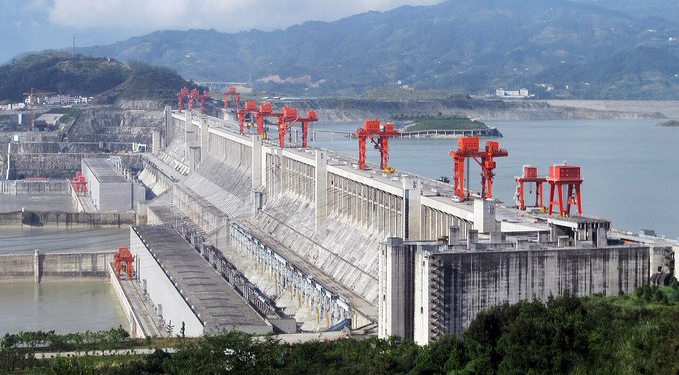New Delhi: New Delhi has taken note of reports about China starting the construction of a mega dam on the lower reaches of Yarlung Tsangpo River (upper reaches of Brahmaputra) in Tibet, which the external affairs minister recently took up with the Chinese foreign minister during the latter’s visit to India, the government told Rajya Sabha Thursday.
In a written response to queries on whether the government has raised concerns with China regarding the strategic and environmental threats posed by the Yarlung Tsangpo dam, Minister of State for External Affairs, Kirti Vardhan Singh, said, “This project was first made public as far back as 1986 and since then, preparations have been underway in China.”
The government “carefully monitors” all developments relating to the Brahmaputra River, including plans by China to develop hydropower projects, and “takes necessary measures to protect our interests”, including preventive and corrective measures to safeguard the life and livelihood of Indian citizens residing in the downstream areas, the minister said.
Various issues relating to trans-border rivers are discussed with China under the ambit of an institutionalised Expert Level Mechanism established in 2006, as well as through diplomatic channels, the government said.
“As a lower riparian state with considerable established user rights to the waters of the transborder rivers, the government has consistently conveyed its views and concerns over activities in the upstream areas to the Chinese authorities, including on the need for transparency and consultation with the downstream countries, and urged them to ensure that the interests of the downstream slates are not harmed by them,” Singh said.
India and China signed a memorandum of understanding (MoU) on “provision of hydrological information on the Yaluzangbu/Brahmaputra River in flood season” in 2002, which was renewed in 2008, 2013 and 2018, the minister said.
Another MoU for the provision of flood season “hydrological information of the Langqen Zangbo/Sutlej River” by China to India was signed in 2005 and was renewed in 2010 and 2015 for another five years, he added.
“The Chinese side did not provide the hydrological information with respect to the Brahmaputra and Sutlej rivers in 2017. The issue was taken up with the Chinese side, which conveyed that the non-provision of data was due to technical reasons,” Singh said.
The MoU on Brahmaputra expired June 5, 2023, while the MoU on Sutlej expired November 5, 2020.
“The hydrological data of the Brahmaputra River has been suspended with effect from June 2023, and the hydrological data of the Sutlej River has not been received since 2022,” Singh said.
The need for cooperation on transborder rivers, including resumption of provision of hydrological data by the Chinese side, was highlighted by the government in several bilateral interactions with China, including during the recent visit of External Affairs Minister S Jaishankar to China from July 14-16 for the SCO foreign ministers’ meeting and that of the Chinese Foreign Minister Wang Yi to India August 18, the government said.
The MEA was also asked whether any plan has been devised to build a counter-dam on the Siang River in Arunachal Pradesh.
“The Upper Siang Multipurpose Project (11200 MW) and the Siang Lower HE Project (2700 MW) are projects which have been proposed in the Siang River in Arunachal Pradesh,” Singh said.
PTI






































